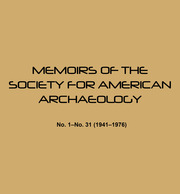No CrossRef data available.
Article contents
Some Problems in the Relationship between Tlingit Archaeology and Ethnology
Published online by Cambridge University Press: 27 June 2018
Extract
In 1949, I undertook an archaeological and ethnological survey of northern Tlingit territory in Alaska. Whereas a good deal was known about Tlingit ethnology, the archaeology of these people was virtually unexplored. Although the northern Tlingit have a culture which is in many respects less rich than that of their southern neighbors, they were presumably middlemen in passing on to the latter those cultural influences which eminated from the Asiatic North Pacific. Also in northern Tlingit territory we ought to find an archaeological horizon or horizons characterized by those traits which link the ancient cultures of the Aleut and Pacific Eskimo area and the Coast Salish area.
The tribal territories of the Yakutat on the Gulf of Alaska and of the Angoon or Hootznuwu on Admiralty Island near the center of the southeastern Alaskan archipelago were found to be the most promising for a study of Tlingit culture history, and accordingly in 1950 a whole season was spent at Angoon.
- Type
- Research Article
- Information
- Copyright
- Copyright © Society for American Archaeology 1953
References
* The field work in 1949 and 1950 was supported hy the Arctic Institute of North America (with funds from the Office of Naval Research) and by the Wenner-Gren Foundation for Anthropological Research (Viking Fund).


